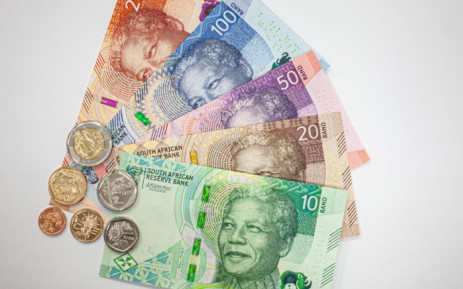The South African Reserve Bank (SARB) has launched new bank notes and coins with advanced security features. The new currency will feature the big five plus family members on the back of the banknotes, with the honeybee on the ten-cent coin, the aloe on the twenty-cent coin, and whales on the R5 coin. While these changes may make the currency appear vibrant, the SARB is more concerned with protecting the value of the rand, as inflation remains outside its target range. This article will provide a detailed analysis of the South African economy, focusing on the challenges it faces and the measures the government and SARB are taking to overcome them.
Challenges Facing the South African Economy:
The South African economy has faced numerous challenges over the years, including high unemployment, income inequality, and slow economic growth. However, in recent times, two issues have taken center stage: load shedding and a weak logistics network.
Load shedding is a scheduled power outage implemented by the national power utility, Eskom, to prevent the national electricity grid from collapsing. Load shedding has had a severe impact on the economy, leading to lost production, reduced consumer spending, and declining investor confidence. The South African economy was expected to grow by 2.3% in 2021, but due to intensified load shedding, the economy is now projected to grow by only 0.2%. The power outages have also affected the logistics network, making it difficult for companies to transport goods to and from ports for export. The country’s transport and logistics problems have limited exports, leading to a decline in foreign exchange earnings.
The South African government has identified the energy and transport sectors as critical areas for economic growth. The government plans to build capacity in these sectors to ensure stable power supply and improve the logistics network. The government’s plans are expected to stimulate economic growth and provide employment opportunities, which will help reduce unemployment and income inequality.
The Role of the South African Reserve Bank: The SARB is responsible for maintaining price stability and promoting sustainable economic growth in South Africa. Inflation targeting is one of the key tools used by the SARB to maintain price stability. The SARB’s inflation target range is between 3% and 6%, but inflation has been outside this range for some time, which has raised concerns about the value of the rand.
The SARB has stated that it will not hesitate to intervene to protect the rand if inflation remains high. The bank can use various monetary policy tools, such as adjusting interest rates, to curb inflation. However, interest rate adjustments have a broader impact on the economy and can also affect economic growth. Therefore, the SARB must strike a balance between maintaining price stability and promoting sustainable economic growth.
The South African economy faces significant challenges due to load shedding and a weak logistics network, which has led to slow economic growth and declining foreign exchange earnings. However, the government’s plans to build capacity in the energy and transport sectors are expected to stimulate economic growth and provide employment opportunities. The SARB plays a critical role in maintaining price stability and promoting sustainable economic growth in South Africa. As inflation remains outside the SARB’s target range, the bank must strike a balance between maintaining price stability and promoting economic growth.
While the government’s plans to build capacity in the energy and transport sectors are expected to bring numerous benefits to the South African economy, there are also some disadvantages to consider. For example, the infrastructure projects may require significant investments, which could increase the government’s debt burden. Additionally, the projects may take time to complete, which means that their impact on the economy may not be felt immediately.
On the other hand, the advantages of these projects are numerous. They could lead to increased employment opportunities and reduced unemployment rates, which will improve living standards and reduce income inequality. Additionally, improved energy and transport infrastructure could lead to increased productivity, as businesses will be able to transport goods more efficiently and reliably. These benefits could contribute to sustainable economic growth in the long run.
In conclusion, the South African government and the SARB must work together to address the challenges facing the economy, such as load shedding, a weak logistics network, and high inflation. The government’s plans to build capacity in the energy and transport sectors are a step in the right direction, but they must be implemented carefully to ensure that the benefits outweigh the costs. The SARB must also maintain price stability while promoting sustainable economic growth to ensure that the value of the rand is protected. By working together, the government and the SARB can create a more prosperous and equitable South Africa for all its citizens.









